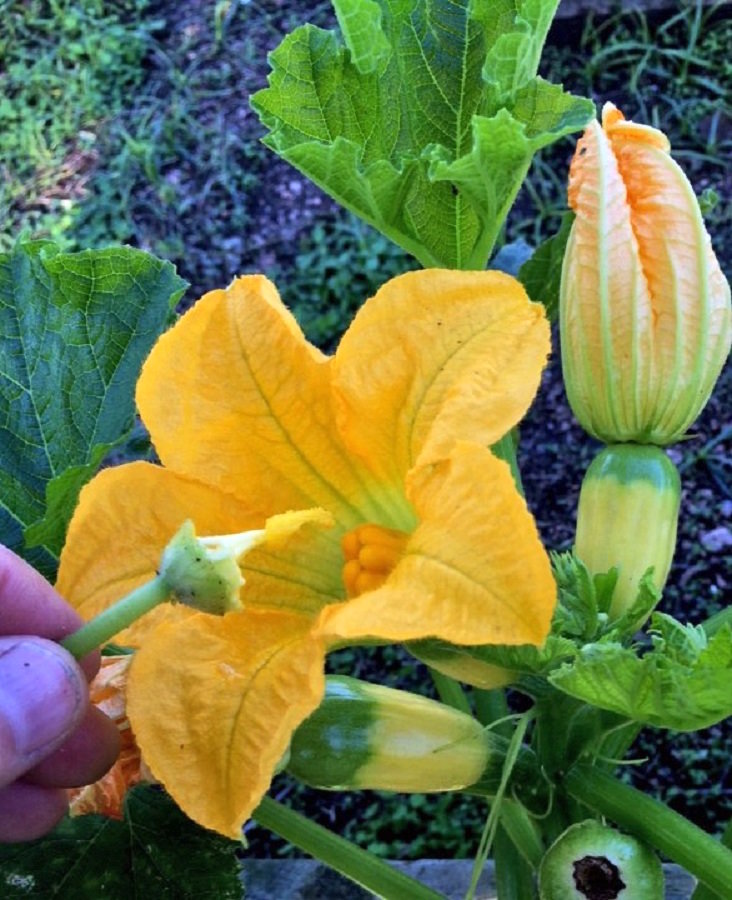Victory Gardens in full bloom
Social distancing doesn't apply to Victory Garden vegetables; some actually do best when in stuffed into close quarters.
After over a decade of living from late May until early September in England, it's been awhile since I planted summer veggies in my home grounds. But with the growing realization that no, getting on a plane for jolly old Lancashire ain't happening this year, I've started setting out stuff for a Mississippi summer harvest.
Trouble is, though my flower beds and pots always sport a few pretty vegetable and herbs, it's been awhile since I‘ve had a sho-nuff food garden. Might have forgotten how.
When I was a kid I toiled nearly daily in my folks' huge garden, which produced plenty to eat fresh and enough extra to freeze, put up in jars, and share with neighbors. But today not many people want to tie up my dad's forty tomato plants or weed his three twenty-foot rows of okra that had to be harvested every other day.
Most folks now just want a small plot, often a raised bed out in the yard or clusters of big pots on the patio, to set out a few favorite veggies and herbs with maybe a few flowers thrown in for looks and to attract pollinators. In fact, according to National Gardening Association researchers, while the average size dedicated home food garden is just shy of six hundred square feet (twenty by thirty feet), the median urban plot is only about a hundred square feet. To visualize that, it's about the space my old pickup truck takes up.
So, that's what I'm starting out with, remembering the aphorism of my early home garden mentor Milo Burnham, author of the Extension Service's all-inclusive Garden Tabloid (free online, go to MSUCARES.com and type it in the search box); he said "It's better to start small and build on success than get discouraged and give up because the garden was too much work."
So, this week I bit the bullet and dug up and wood-framed a hundred square feet of otherwise useless hot, sunny "hell strip" between the west side of my house and my neighbor's driveway. Broke up the clay, spread a two-inch layer of compost and bark plus a little starter fertilizer, and churned it together with a rented tiller. Did it right the first time, so from ow on now I can garden with just hand tools.
To get the most out of it I'm doing two things: Avoiding long skinny rows by forming easily-reached four-foot wide individual plots with stepping boards between each, and only planting what I like to eat and which produces a lot in a small space or is expensive in the store, including tomatoes, peppers, a little okra mostly for looks, and sweet potatoes. Then mixing things up in groups rather than a lot of each in one spot so bugs and blights have harder targets to hit.
Remembering in years past having to break off male squash flowers to hand-pollinate the female flowers for lack of bees, I'm adding long-blooming zinnias, salvias, and guara to attract pollinators to do that crucial work. And I'm gonna cover some plants with insect netting.
Like I wrote earlier, some plants do better when crowded together, so I'm also planting companion mounds of corn, beans, and squash, a super productive and attractive combination that has sustained people for many centuries; go online to learn about the ancient" three sisters" gardening.
I'll soon find out if after all these years of just talking the talk, whether or not I can walk the walk.
Felder Rushing is a Mississippi author, columnist, and host of the "Gestalt Gardener" on MPB Think Radio. Email gardening questions to rushingfelder@yahoo.com.

